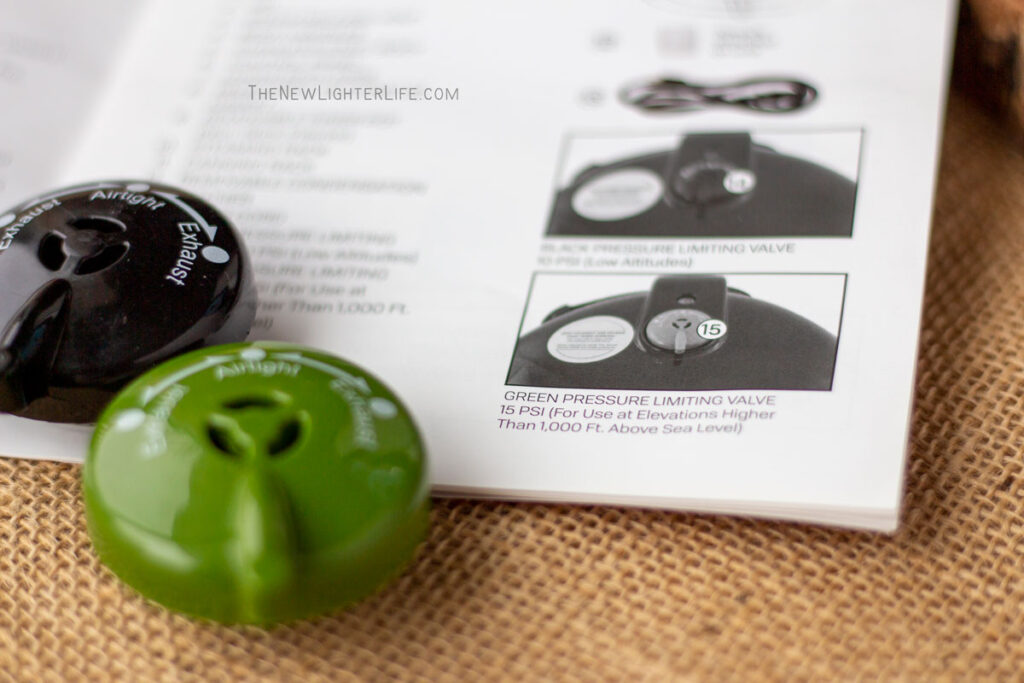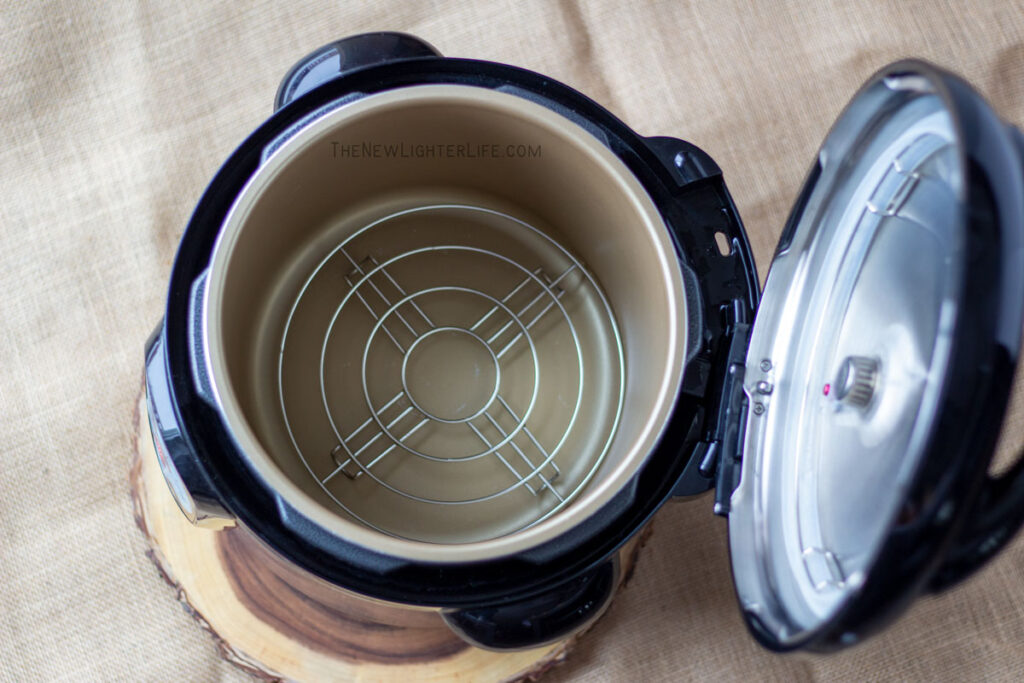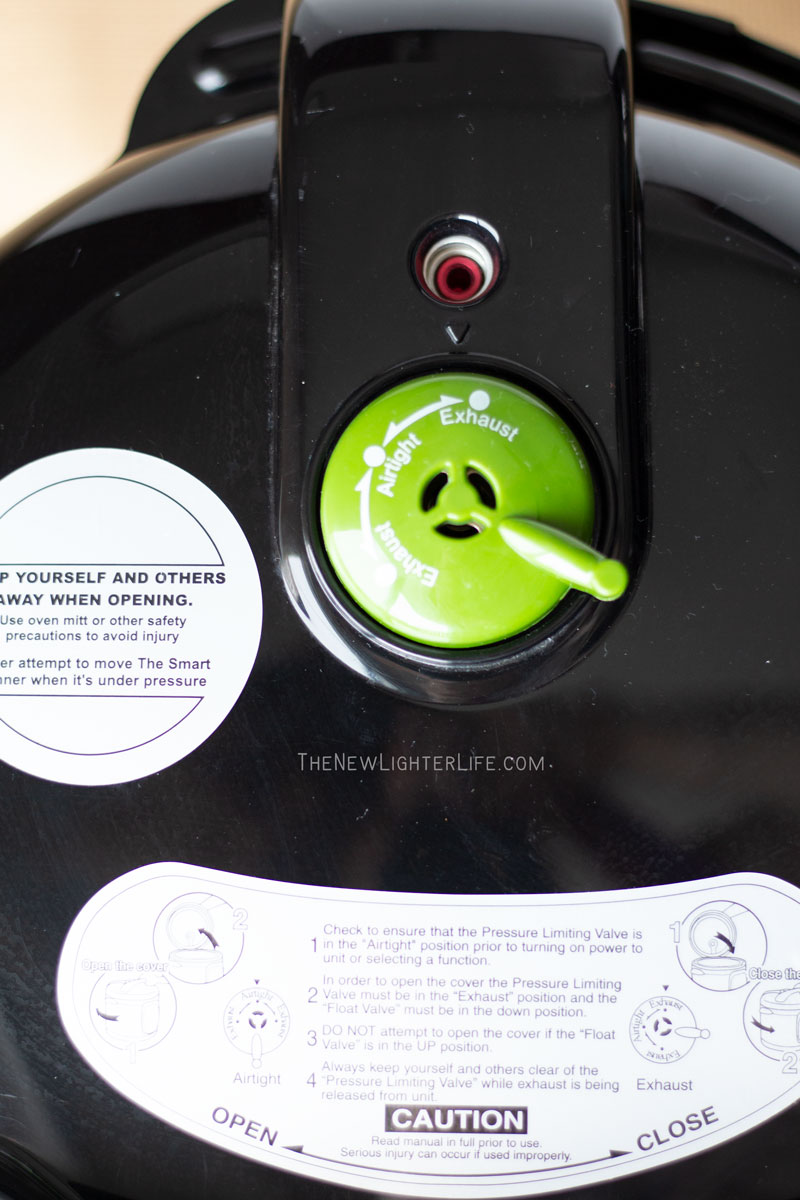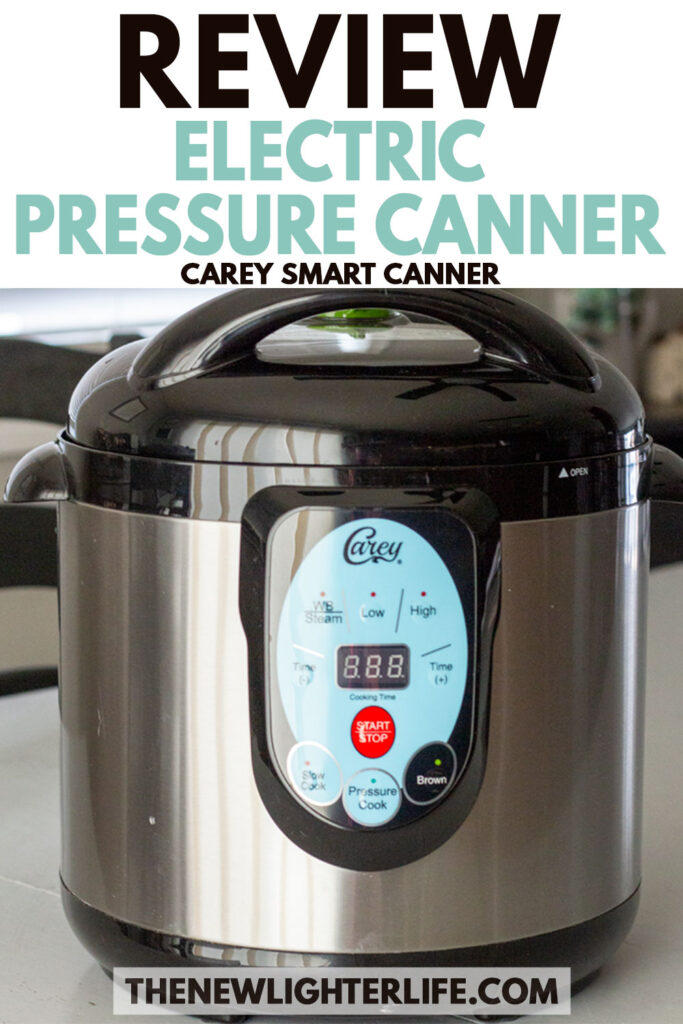If you’ve been reading my blog, you know I’ve been catching up on canning posts. Recently I posted about pressure canning and information to help you decide if you need one. Today, I’m going to give you my honest review of an electric pressure canner, the Carey Smart Canner. Spoiler alert – I love it – but my relationship with this canner did NOT start out that way.
I promise I’ll get into my review of the Carey Smart Canner which looks to be identical to the Nesco Electric Canner (which is more expensive as of this posting). But first, there are two things you need to remember when considering an electric pressure canner versus an electric pressure cooker.
- You CANNOT pressure can with an electric pressure cooker.
- You CAN pressure cook with an electric pressure canner.
You CANNOT Pressure Can with an Electric Pressure Cooker
You may remember that when I discussed the ins and outs of pressure canning. I was VERY explicit that you cannot use your pressure cooker to pressure can (again, the jury is still out on whether you can pressure can in an Instant Pot Max).
I still firmly hold to only pressure canning in canners that are designed for pressure canning. The Instant Pots are not designed for canning and I would avoid them.
You CAN Pressure Cook with an Electric Pressure Canner
Yup. A pressure canner can pressure cook, slow cook, or saute food. (similar to how an Instant Pot works – but with less pre-programming)
When in the canning function, your electric pressure canner is specifically designed to maintain the proper temperature (240 degrees F) and proper pressure for safe food preservation. This effectively kills bacteria (botulism) so no one gets sick from your canned goods.
If you choose to pressure cook with an electric pressure canner, I’d try to find an extra stainless steel pot to use just for food. As of this date, I have not been able to find a healthier metal replacement pot. In my experience, hard water and/or residue builds up on the pot and it’s harder to clean off the aluminum pot that comes with the electric canner. Plus, aluminum is not the healthiest metal and is something I avoid.
Now that I’ve settled that, let me get into the specifics of the electric pressure canner, the Carey Smart Canner.
Electric Pressure Canner, Carey Smart Canner – Review
I’ve had this electric pressure canner for almost 3 years and we had a rough start.
Not a Fan (in the Beginning)
Let me be perfectly honest and disclose that I have been formulating the post that I was going to write telling you all how much I hated this canner. My hope was that I’d save you some cashola by telling you about my experience with it.
I tried to use this canner a few times shortly after I bought it. All I remember was that I had a lot of problems with it running properly, sealing, running out of water, and erroring out. I ended up so frustrated. Ever since then, it’s been sitting in our basement collecting dust.
Just a few months ago, Mark asked me if I was going to get rid of it since it was taking up space. It’s really hard for me to admit defeat but I was pretty disappointed in this canner.
So I told him, yes.
Absolutely.
I was getting rid of it.
But I just wanted to give it ONE MORE TRY before I left the world of electric pressure canners for the classic, vintage canner that I’ve known for my whole life.
Retesting the Electric Pressure Canner
About a month after my conversation with Mark, I had the perfect opportunity to test out my Carey Smart Canner again. It just so happens that I needed to can a few jars of beef bone broth (post coming soon) and my Blue Hubbard squash (also coming soon).
Guys! It worked perfectly and I’m in love! I’m in love and I don’t care who knows it!
lol…sorry, I crack myself up.
I think the Problem Was…
Me.
In the interest of full disclosure, I’m terrible about reading instructions. There are usually about 20 things on my to-do list. For the day!
I remember when I tried this canner a couple of years ago, I was rushing around trying to get some green beans canned and I didn’t take the time to read all the instructions.
So let me give you a few tips on canning with this baby…
Tips for Using the Carey Smart Canner
- Read the Instructions. This is #1 for a reason. I can’t say that they are written very succinctly, but they do make sense if you take the time to read them.
- Change the Pressure Limiting Valve if Above 1,000 Feet. If this applies to where you are, the pressure limiting valve needs to be changed from the installed (black) to the extra (green). This is easy to do and just pops in and out.

- Use the Correct Amount of Water. If you’re used to using an Instant Pot pressure cooker, you know you need 1 cup of water. For this pressure canner, you need 4 cups (or 1 quart) of water.
- Use a Canning Rack. There is a steamer rack (disc with holes) or a canner rack (wire) use the canning rack if you are canning.

- Stay Nearby When Starting Canner Process. If you are busy multi-tasking, I recommend you not try to use this canner for the first time. You need to monitor the electronic display for when it counts down and then turn your pressure limiting valve from “Exhaust” to “Airtight”. Once you switch your valve, you can go on your merry little way.

- Natural Release. Do not release the pressure limiting valve by moving to “Exhaust” after the canner is done canning. You’ll just let the canner cool down and come to normal pressure slowly and naturally.
- Shut off or Unplug Canner. While the canner is going through the natural release, just unplug it or hit the Start/Stop button to shut it off.
Pros & Cons of the Carey Smart Canner
Whether this is a pro or con is up to your interpretation but below is a list of the number of jars and sizes that the canner can process in one batch:
- Quart (32 oz) – 4 Wide Mouth Jars – ONLY Pressure
- Pint (16 oz) – 5 Wide Mouth Jars – Pressure or Water Bath
- 1/2 Pint (8 oz) – 8 Jars – Pressure or Water Bath
- 1/4 Pint (4 oz) – 16 Jars – Pressure or Water Bath
Now let’s get into the list of pros and cons of this specific canner.
Pros of the Smart Canner
- Multi-Function – It pressure cooks, slow cooks, browns, steams, water bath cans, and pressure cans.
- Less Watching – You do not need to watch this canner like a hawk to make sure the pressure is right as you do with traditional stovetop canners.
- More Consistent Canning – The canner maintains everything at an even temperature and your heat/pressure does not fluctuate as they normally do on a stovetop.
- Less Heat – This canner does not put off the heat like a traditional water bath or pressure canner.
- 1/4 Pint Capacity – I don’t know why you’d want to pressure can 1/4 pint jars but the ability to water bath can 16 jelly jars at one time is pretty sweet. If you process this many, you need to use the steamer rack between layers.
Cons of the Smart Canner
- Can’t Water Bath All Jars – As you can see in the breakdown above, quart-size jars won’t work for water bath canning. This is due to their size and needs for water to be above jars. (you can pressure can quart-size jars)
- Loud – The beep on this machine is piercing. Not a major con, but it is a con nonetheless.
- Pot is Aluminum – I wish this pot was stainless steel and I would use it as a cooker if it was.
That’s it, friends. Hopefully, this helps you make a decision on whether you want to invest in an electric canner.

I think you got the exhaust and airtight mixed up. You start with airtight then after countdown you set the limiting valve to exhaust.
Sorry, I was thinking of pressure cooking and not canning.
No worries Verna. Happy Canning! 🙂
Question: Last year I did pickles at a low-temp water bath. The electric water bath canners are really expensive and hard to find. Is this canner able to water bath at 185 for 20 min? How do you set the temp? Thanks for any help you can offer.
Hi Lynda, I just checked the manual and there are no options to manually set the temperature for any of the settings. Everything is auto-programmed. Bummer!